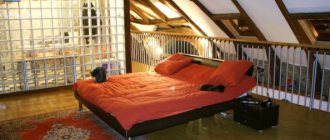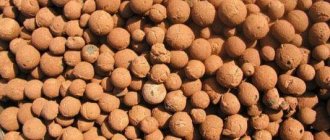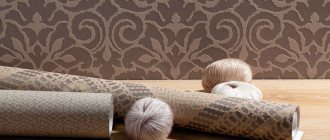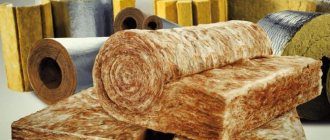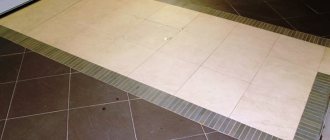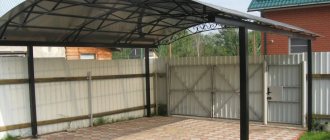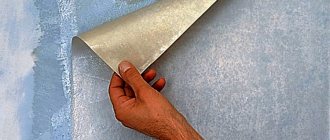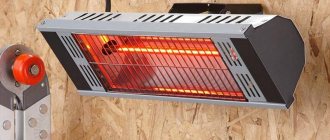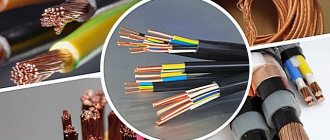Heating or insulating?
When the temperature in the garage is below freezing, the condensation freezes. And when the engine heats up, it begins to melt. Freeze-thaw cycles do not benefit either the metal or the internal mechanisms.
But heating the room is not the optimal solution. By leaving a warm garage into the cold, we create a situation of sharp temperature changes. And when we return back to the heated space, we get the formation of condensation even on those parts where moisture does not enter when the car is moving.
Experts say that the best conditions for winter car storage are created when the thermometer shows +5°C. The danger of corrosion under such conditions is minimal, and the temperature difference between the street and the room does not have such a detrimental effect on the car.
Accordingly, when choosing between connecting to the heating system and insulating the garage with your own hands, it is wiser to choose the second option. Moreover, it will help you save on your monthly energy bills.
Basic requirements for garage insulation
When insulating a car storage area, it is worth remembering a number of key points.
- Ventilation holes must not be sealed - any thermally insulated structure needs ventilation just as much as a heated one.
- Thermal protection should affect not only walls, but also garage doors, floors, and roofs.
- If you want to do everything according to the rules, it would be useful to study the sixth section of SNiP 2.07.01–89. It regulates the requirements for premises where vehicles are stored. Of course, when it comes to a personal garage, it is not necessary to comply with them. However, standards can help address a number of issues.
- To insulate the gate, in most cases, internal thermal protection is installed.
Materials market review: choosing the best
The first thing you have to consider when choosing a heat insulator is the type of insulation you choose. For example, moisture-permeable materials, when wet, change their properties. Therefore, they are not a good option for external thermal protection. And for internal thermal insulation, insulation materials that emit harmful substances in the summer heat or during domestic heating are not suitable.
The modern market offers several types of materials for thermal insulation of garages. Let's consider the main properties and characteristics of the most popular of them.
Mineral wool
Available in the form of slabs and rolls. It retains heat well and has sound insulation properties. But at the same time, it easily absorbs moisture - high humidity is the main enemy of cotton insulation. And when wet, it completely loses its ability to insulate heat. Therefore, its use requires high-quality hydro- and vapor barrier. It is almost impossible to dry this insulation; it becomes brittle and easily damaged. And when the glass wool gets wet during installation, it clumps and becomes unsuitable for further use (cavities appear inside it).
Considering that the external insulation pie can be damaged or depressurized, using this material is risky. In general, mineral wool is not the best choice for vertical installation. It has considerable weight and consists of fibers. Under their own weight, they can sag over the years, and voids will begin to form between them - the so-called cold bridges.
This heat insulator has two advantages: low price and equally low thermal conductivity. But that's all. Then only the shortcomings begin. Once in the lungs, glass particles are no longer excreted from the body. They leave itching and irritation on the skin. When installing them, a protective suit, a respirator and a mask are required, and after completion of work, a thorough cleaning of the room is required. Then you will have to wait a day or two until the glass dust, invisible to the eye, settles.
If during operation there is at least partial damage to the protective layer of films or foil material, you will again need to rent special clothing and resort to cleaning after completion of the repair.
And finally, the material shrinks and is not durable. Therefore, it does not matter what type of insulation you prefer: internal or external, it is better not to stop at this option.
Warm plaster
Warm plaster is a relatively new material on the market of heat-saving technologies. Warm plaster contains substances with low thermal conductivity: expanded polystyrene, expanded clay, pumice, etc., the binding element is gypsum or cement.
Like any other cement or gypsum based plaster, it is applied to any type of surface: drywall, brick or aerated concrete. The cost of use is about 100 rubles per 1 sq. m. (with a layer thickness of 10 mm).
Advantages of the material:
- Possibility of use both as the main heat insulator and as an additional one.
- Easy to apply, light weight compared to “regular” plaster.
- Fire resistance.
- Environmentally friendly.
Flaws:
- High hygroscopicity.
- When the layer thickness is more than 20 mm, reinforcement is required.
- Suitable for use only for interior work.
- Additional waterproofing is required.
Styrofoam
This material is very popular due to its low cost and ease of installation. It retains heat well and lasts for decades. You can install it yourself, without having any special tools or special construction skills at hand. But it still cannot be called an ideal solution. Although not as significant as mineral wool, it absorbs moisture. Very easily damaged and crumbles. Its granules have low adhesive strength, so over the years they can fly out even with accidental pressure on the material.
But that’s not even the main thing. There is a huge amount of uncertified polystyrene foam in the market due to the high demand for it. Finding a high-quality and safe product for health is not an easy task. And the one that was produced in violation of technology, when the temperature rises and the sun’s rays hit it, it begins to release toxic substances. Considering that the garage is a closed space, this is fraught with serious health problems for the car owner.
Conclusion
Of course, looking at various photos of a high-quality insulated garage, everyone wants to reproduce such a decent finish in their own home. And this is quite real, there is nothing complicated about it.
Any “straight-handed” person is able to do everything himself without much expense or effort. It won’t take too much time, but there will be a huge amount of benefits. The car will be protected from the influence of an aggressive external environment, and its owner will be able to comfortably carry out car repairs during the cold season.
PENOPLEX (extruded polystyrene foam)
Perhaps, for insulating a garage from the inside with your own hands, this is the best option. It is affordable and even easier to install than foam plastic - the joints do not need to be sealed with foam, because they have L-shaped grooves. It is easy to cut and can be glued directly to the wall.
But the most important thing, of course, is its thermal insulation ability - one of the best among modern materials. Moreover, it remains unchanged in any situation. PENOPLEX does not get wet (moisture absorption coefficient is less than 0.4% in 28 days), is not afraid of defrost-freeze cycles and lasts for more than 50 years.
It is resistant to compression, does not shrink, absorbs noise, does not rot, does not harbor insects, and to top it all off, it is a homogeneous mass of polymer without individual granules. This provides it with high strength even many years after the work has been carried out.
Summarizing all of the above, we conclude that this material is ideal for both external and internal insulation.
Types of insulation
The construction market offers a wide variety of insulation materials, which differ in thickness, structure, flexibility, installation method and other characteristics. Before performing external or internal thermal insulation work, it is recommended to compare suitable insulation options and select the optimal one.
When selecting material, it is necessary to provide the required quantity to completely cover all surfaces. An integrated approach will help you choose a material with the best insulating properties.
Mineral wool
Mineral wool, which is a roll-type material with a foil coating that reflects heat, is ideal for the interior cladding of a building. Mineral wool is easy to install and does not create a load on the ceilings of walls and roofs. Mineral wool fibers ensure free air circulation through the layers of insulation, which prevents the development of mold.
Other advantages of mineral wool include: low thermal conductivity, sound insulation properties, light weight, ease of installation.
Styrofoam
Polystyrene foam is considered a universal insulation material that can be attached to any surface inside the garage. The material is not exposed to liquids, is resistant to changing temperatures, does not rot or mold over time. When interacting with polyurethane foam or glue, the foam does not collapse due to the absence of a chemical reaction. The disadvantages of the material are easy flammability and the threat of damage by rodents. To protect the foam, additional protective finishing is required.
Expanded polystyrene
According to the installation method, expanded polystyrene has a number of similarities with polystyrene foam. Distinctive characteristics are a reduced water absorption coefficient and increased density. Due to its large thickness, polystyrene foam provides more powerful protection against frost, but is more expensive than other materials.
Penoizol
Penoizol is an analogue of polystyrene foam and is used for application to walls in a liquid state. The material absorbs liquid well, but does not accumulate it in itself, evaporating into the air. Penoizol is considered a hygroscopic, vapor-permeable insulation with a combustion class of G-1. One of the competitive advantages of penoizol is the possibility of production directly on the job site and subsequent application to any surface.
Glass wool
Compared to mineral wool, glass wool is cheaper, but it can only be used with protective gloves. Cotton fibers are hard and prickly, so neglecting safety precautions can lead to injury. If liquid drips onto the surface of the glass wool during installation, it will have to be thrown away, since it is not possible to dry it. Once wet, the fibers lose their original characteristics and emit an unpleasant odor.
Polyurethane foam
Modern material has rapidly become widespread due to its increased resistance to external factors. Polyurethane foam does not lose its qualities when interacting with liquid and, after drying, forms a dense hydrophobic coating. Application of the material requires specialized equipment.
The installation difficulties are justified by a tight connection to any surface and high-quality protection against heat loss. After installation, the polyurethane foam expands, filling all empty spaces and cracks.
Warm plaster
Reformulated plaster consists of specialized fillers, including sawdust, expanded polystyrene particles and expanded vermiculite. The combination of fillers gives the plaster thermal insulation properties. To obtain the required result when finishing premises, it is necessary to apply a dense and heavy layer of plaster. To simplify it, it is recommended to combine warm plaster with other types of insulation materials.
How to insulate a garage from the outside - step-by-step instructions
For external work, it is most convenient to use rigid slabs. The cheapest option is polystyrene foam. PENOPLEX is more expensive, but much more effective in terms of moisture resistance, heat protection, service life and strength. Therefore, we will consider the installation procedure for this particular material. However, it is almost no different from the foam insulation technology.
We will need:
- glue (branded PENOPLEX is best, since its composition is specially adapted for this insulation and does not destroy it);
- a spatula for applying glue or a special gun;
- paint knife or jigsaw for cutting sheets;
- fastening disc elements (4 pieces for each plate).
Step 1.
We prepare the walls.
We clean them of old paint, dirt, dust, cobwebs and other things. You can use a primer to help the glue adhere better. But this is an optional point.
Step 2.
We fix the bottom bar.
It is typical for slabs to start installation from the ground. We attach the starting profile to the dowels and begin laying the material in a checkerboard pattern.
Step 3.
Insulation fasteners.
This is a simple matter: apply glue in strips to the slab and apply it to the wall. We connect the L-shaped grooves to each other, thereby ensuring a tight fit of the material without gaps. When the glue dries, for greater reliability we fix the sheet with disc-shaped dowels.
Step 4.
Final works.
To protect PENOPLEX from ultraviolet radiation and make the facade more aesthetically pleasing, we plaster the walls or cover them with siding, DSP, or other material.
Reflective Thermal Insulation
Reflective thermal insulation is polyurethane foam with a thickness of 3 to 10 mm, with a glued heat-reflecting element, which is ordinary foil. The material is glued so that the side with the foil faces inside the room. Installation is carried out using a furniture stapler or special glue. The cost of the material starts from 35 rubles per square meter.
Advantages of reflective thermal insulation:
- Compliance with all environmental standards and requirements. It does not emit harmful elements. Low flammability.
- Easy to install due to low weight.
- Ease of transportation (material is supplied in rolls).
Flaws:
- Softness. Does not allow finishing of the room (for example, plastering work) on top of the laid material.
- Possibility of deformation and damage to the material during installation, because it tears and cuts easily.
- The heat-saving properties are reduced if the material is nailed to the surface.
- The greatest effect of reflective thermal insulation is achieved when used with other insulation methods.
Floor insulation
It can be done in different ways. One of the simplest and least labor-intensive options is PENOPLEX insulation under the screed. To do this, the floor will need to be raised a little. This will reduce the height of the room, but you won’t have to dig a pit - you can install the heat insulator on the existing floor. The procedure is simple.
1. Clean the surface, make a cement-sand screed (CSS) or level the coating using building mixtures. It is important that the differences do not exceed 5 mm.
2. At the next stage, we lay the PENOPLEX FOUNDATION® directly on the floor without using glue or dowels. You can put insulating material in one or several layers.
3. To distribute upcoming point loads, it is necessary to fill with concrete mortar or self-leveling mixture 40 mm thick. In this case, the insulation is insulated with film, and its seams are securely fastened with tape. Leave 1–2 cm of empty space between the wall and the screed to take into account thermal expansion and subsequently make noise insulation by filling it with polyethylene foam.
4. At the finish, the finishing floor is laid.
Using metal sheathing
The garage ceiling can be insulated using metal sheathing. The use of such a frame is more reliable and durable. The use of this material for lathing is a more expensive and labor-intensive process. A galvanized profile is used for installation. The guides should be from UD, and the jumpers from CD.
Installation of a metal profile under the insulation should be carried out in the following sequence:
- First you need to make precise markings of the ceiling along which the material will be attached.
- Next, you need to prepare the guides. To do this, you need to make holes for fasteners. After which the profile needs to be attached to the ceiling.
- Then insulation is laid into the holes, and jumpers from the wall profile are installed on top of it.
- The final stage is attaching the plastic panels to the profile.
Every car owner dreams of having his own warm garage. In order for the room to be warm, before insulating the ceiling in the garage from the inside or the middle, it is necessary to choose the right material for installation. This is the only way to ensure that warm air does not escape through the walls and ceiling.
Gate protection
Many people are faced with the problem of seasonal “walking” of the pillars (the base of the gate), which is why they do not close. The best solution is to protect the base (posts) from freezing when installing the gate. If you have already installed ordinary iron gates, then they must also be thermally insulated from the inside. If it is possible to attach the sheets with dowels to the material from which the gate is made, it is worth doing so. If not, the usual glue method will do. The already glued insulation is covered first with a vapor barrier film, then with outer skin. To enhance thermal protection, you can use foiled polyethylene.
Thus, the correct choice of thermal insulation material makes insulating a garage a fairly simple process that anyone can do.
15.06.2018
Return to list
No. 4. Thermal insulation paint
Another modern material that amazes not only with its ease of use, but also with its efficiency. Here are just a few striking examples: a layer of paint equal to 1 mm is equivalent to a layer of mineral wool of 50 mm, and a layer of paint applied according to the instructions is the same as a wall of 1.5 bricks. The unique properties of this insulation are based on the structural features and operating principle . All thermal insulation materials known to us work on the principle of a barrier, preventing heat from leaving the space. Thermal insulating paint becomes not only a barrier to the penetration of infrared rays outside, but also their reflector, making it much more difficult for heat to escape the confines of such a room. This effect was made possible due to the presence of a vacuum inside, which prevents the passage of infrared rays.
The advantages of thermal insulation paints can be listed for a long time. They have excellent adhesion to most building materials, have good thermal insulation performance, are not afraid of moisture, are vapor permeable, and protect metal from corrosion. A layer of such insulation is very light in weight, so it does not weigh down the structure, and the application process itself is as simple as possible and is not much different from using conventional paints. The list of advantages is complemented by resistance to ultraviolet radiation, ease of restoration of damaged coating, resistance to high temperatures (paint does not burn, but only chars at 2600C or decomposes at 8000C), environmental friendliness. But one cannot note such a minus as the rather high cost of paint, its high consumption, and it cannot always be used as an independent insulation material, but nevertheless, this option is being used more and more often for insulating a garage.
